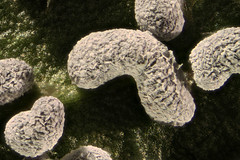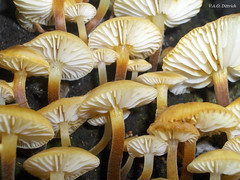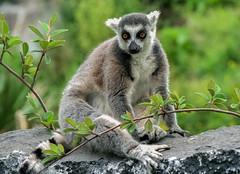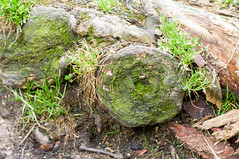![]()
![]()
![]()
Use LEFT and RIGHT arrow keys to navigate between flashcards;
Use UP and DOWN arrow keys to flip the card;
H to show hint;
A reads text to speech;
16 Cards in this Set
- Front
- Back

Kingdom |
Biology. a taxonomic category of the highest rank,grouping together all forms of life having certainfundamental characteristics in common: in thefive-kingdom classification scheme adopted bymany biologists, separate kingdoms are assignedto animals (Animalia), plants (Plantae), fungi(Fungi), protozoa and eucaryotic algae (Protista),and bacteria and blue-green algae (Monera). |
|

Bacteria |
ubiquitous one-celled organisms, spherical, spiral,or rod-shaped and appearing singly or in chains,comprising the Schizomycota, a phylum of thekingdom Monera (in some classification systemsthe plant class Schizomycetes), various species ofwhich are involved in fermentation, putrefaction,infectious diseases, or nitrogen fixation. |
|

Protista |
A former taxonomic kingdom made up of eukaryotic,unicellular organisms. Members of Protista now belongto the kingdom Protoctista, a new classification in mostmodern taxonomic systems. |
|

Fungi |
a taxonomic kingdom, or in some classificationschemes a division of the kingdom Plantae,comprising all the fungus groups and sometimesalso the slime molds. |
|

Plants |
any member of the kingdom Plantae, comprisingmulticellular organisms that typically produce theirown food from inorganic matter by the process ofphotosynthesis and that have more or less rigidcell walls containing cellulose, including vascularplants, mosses, liverworts, and hornworts: someclassification schemes may include fungi, algae,bacteria, blue-green algae, and certain single-celled eukaryotes that have plantlike qualities, asrigid cell walls or photosynthesis. |
|

Animals |
any member of the kingdom Animalia, comprisingmulticellular organisms that have a well-definedshape and usually limited growth, can movevoluntarily, actively acquire food and digest itinternally, and have sensory and nervous systemsthat allow them to respond rapidly to stimuli:some classification schemes also include protozoaand certain other single-celled eukaryotes thathave motility and animallike nutritional modes. |
|

Vertebrate |
belonging or pertaining to the Vertebrata (orCraniata), a subphylum of chordate animals,comprising those having a brain enclosed in a skullor cranium and a segmented spinal column; amajor taxonomic group that includes mammals,birds, reptiles, amphibians, and fishes. |
|

Unicellular |
having or consisting of a single cell. |
|

Multicellular |
composed of several or many cells. |
|

Eukaryote |
any organism having as its fundamental structuralunit a cell type that contains specialized organellesin the cytoplasm, a membrane-bound nucleusenclosing genetic material organized intochromosomes, and an elaborate system of divisionby mitosis or meiosis, characteristic of all lifeforms except bacteria, blue-green algae, and otherprimitive microorganisms. |
|

Prokaryote |
any cellular organism that has no nuclear membrane, no organelles in the cytoplasm except ribosomes, and has its genetic material in the form of single continuous strands forming coils or loops, characteristic of all organisms in the kingdom Monera, as the bacteria and blue-green algae. |
|
|
Sexual |
having sexual organs or reproducing by processesinvolving both sexes. |
|
|
Asexual |
having sexual organs or reproducing by processesinvolving both sexes. |
|

Heterotroph |
Biology. an organism requiring organic compoundsfor its principal source of food. |
|

Autotroph |
Biology. an organism requiring organic compoundsfor its principal source of food. |
|

Microscopic |
so small as to be invisible or indistinct without theuse of the microscope. |

